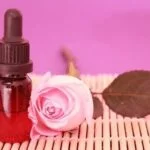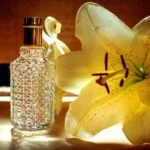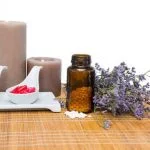Aromatherapy is the practice of using natural plant extracts to promote health and well-being. In this article, we will explore how to make aromatherapy at home, including the basics, benefits, essential oils and their properties, DIY recipes, diffusers, safety precautions, different purposes, and how to incorporate it into your daily routine.
Whether you are looking for stress relief, a sleep aid, or simply want to enhance the atmosphere in your home, aromatherapy can be a powerful tool for improving mental and physical health.
Aromatherapy has been used for centuries as a holistic healing treatment. By understanding the fundamentals of aromatherapy and its benefits, you can harness the power of essential oils to create your own customized blends for relaxation and healing. From choosing the right scents that resonate with you to incorporating it into your daily routine, this article will provide you with all the information you need to get started on your aromatherapy journey.
Essential oils play a crucial role in aromatherapy, each possessing unique properties that cater to different needs. By learning about these properties and how they can affect your mood and overall well-being, you can select the scents that best suit your personal preferences and needs. Additionally, we will delve into DIY aromatherapy recipes so that you can create your own blends tailored to address specific concerns such as stress relief or improving sleep quality.
Benefits of Aromatherapy
Aromatherapy is a holistic healing treatment that uses natural plant extracts, also known as essential oils, to promote overall well-being. These essential oils are used for their therapeutic properties and can be inhaled or applied to the skin during a massage. Aromatherapy has been used for centuries to improve mental and physical health, and its benefits are supported by scientific evidence.
Some of the important benefits of aromatherapy include:
- Stress reduction: Certain essential oils have been shown to reduce stress and anxiety levels, promoting a sense of calm and relaxation.
- Improved sleep: Aromatherapy can aid in improving sleep quality and duration, leading to better overall health.
- Pain management: Certain essential oils possess analgesic properties that can help alleviate pain and discomfort.
- Mood enhancement: Aromatherapy can positively affect mood, helping to combat feelings of depression and fatigue.
How to Make Aromatherapy at Home
Making your own aromatherapy blends at home is a simple and rewarding process. Here’s how you can create your own custom blends:
- Start by choosing a carrier oil, such as almond oil or jojoba oil, which will serve as the base for your blend.
- Select the essential oils that you want to use based on their therapeutic properties. For example, lavender oil is known for its calming effects, while peppermint oil is invigorating.
- Use about 15-20 drops of essential oil per ounce of carrier oil. You can adjust the ratio based on your personal preference for scent strength.
By following these simple steps, you can easily create custom aromatherapy blends tailored to your specific needs and preferences. Whether you’re looking to manage stress, improve sleep quality, or enhance your mood, aromatherapy offers a natural and effective way to support your mental and physical health.
Essential Oils and Their Properties
When it comes to creating your own aromatherapy blends at home, choosing the right essential oils is crucial. Each essential oil has its own unique properties and benefits, so it’s important to select the scents that best suit your needs and preferences. Here are some popular essential oils and their properties to help you choose the right ones for you:
- Lavender: Known for its calming and relaxing properties, lavender oil is often used to promote a sense of peace and tranquility. It can also help with stress relief and improving sleep quality.
- Peppermint: With its invigorating and refreshing scent, peppermint oil is great for boosting energy levels and improving mental clarity. It’s also commonly used for alleviating headaches and reducing nausea.
- Chamomile: This sweet and soothing floral oil is often used for promoting relaxation, easing anxiety, and aiding in sleep. It’s a popular choice for creating blends that help with stress relief and emotional balance.
Now that you have an idea of some popular essential oils and their properties, you can start experimenting with creating your own aromatherapy blends at home. Whether you’re looking to relax, boost your mood, or alleviate certain ailments, understanding the properties of different essential oils will help you choose the right scents for your DIY aromatherapy recipes.
Remember that when using essential oils, it’s important to use them safely. Always dilute them properly before applying them to the skin and keep them out of reach of children and pets. With the right essential oils in hand, you can start incorporating aromatherapy into your daily routine for a more balanced and wellness-focused lifestyle.
DIY Aromatherapy Recipes
Aromatherapy has long been known for its relaxing and healing properties. Making your own aromatherapy blends at home is a great way to personalize your experience and tailor the scents to your specific needs. Not only can it be a fun and creative process, but it also allows you to have full control over what goes into your blends.
To make aromatherapy at home, you will need essential oils, a carrier oil, and possibly other ingredients for added benefits such as dried herbs or flower petals. Essential oils come in a variety of scents, each with its own unique properties and benefits. For example, lavender is known for its calming effects, while peppermint is invigorating and can help with headaches.
One popular DIY aromatherapy recipe is a simple relaxation blend that combines lavender, chamomile, and sweet orange essential oils with a carrier oil. You can create this blend by mixing 10 drops of each essential oil with 2 ounces of the carrier oil of your choice, such as jojoba or coconut oil. This can be used for massage, added to a diffuser or even put into a bath for a soothing experience.
| Essential Oil | Properties/Benefits |
|---|---|
| Lavender | Calming and relaxing |
| Chamomile | Soothing and anti-inflammatory |
| Sweet Orange | Uplifting and mood-boosting |
Aromatherapy Diffusers
Types of Aromatherapy Diffusers
Ultrasonic diffusers are one of the most common types of aromatherapy diffusers. They work by using ultrasonic vibrations to create a fine mist of essential oils and water that is released into the air. Nebulizing diffusers, on the other hand, do not require water and instead disperse pure essential oil directly into the air. Heat diffusers use heat to evaporate the essential oils and release their aroma into the surroundings.
Choosing the Right Diffuser for You
When selecting an aromatherapy diffuser for your home, consider factors such as room size, noise level, and maintenance requirements. Ultrasonic diffusers are ideal for smaller rooms and are typically quieter than other types. Nebulizing diffusers are best for larger spaces and provide a more intense aroma due to their undiluted oil dispersion. Heat diffusers are simple to use but may alter the chemical composition of certain oils through heating.
Making Your Own Aromatherapy Blends
One fun aspect of using aromatherapy diffusers is creating your own custom essential oil blends. Whether you want to promote relaxation, improve mental clarity, or enhance focus, experimenting with different combinations can be a rewarding experience.
For example, blending lavender with bergamot can create a calming atmosphere perfect for unwinding after a long day. By learning how to make aromatherapy at home using these blends with your chosen diffuser, you can personalize your space with scents that cater to your specific needs and preferences.
Safety Precautions
When creating aromatherapy blends at home, it is crucial to handle essential oils with care. These potent substances can cause harm if not used properly. Here are some safety precautions for handling essential oils in your DIY aromatherapy recipes.
Proper Dilution
One of the most important safety precautions when using essential oils is to ensure they are properly diluted before application. Essential oils are highly concentrated and can cause skin irritation or sensitization if applied directly. It is recommended to dilute essential oils with a carrier oil, such as jojoba or coconut oil, before applying them to the skin.
Patch Testing
Before using any new essential oil or blend on your skin, it is advisable to perform a patch test. Apply a small amount of the diluted oil to a discreet area of your skin and wait 24 hours to check for any adverse reactions. This precaution can help prevent potential skin irritations and allergies.
Safe Storage
Essential oils should be stored in dark glass bottles away from direct sunlight and heat to maintain their potency. Keep them out of reach of children and pets, as ingesting certain essential oils can be toxic. Additionally, it is important to label each bottle clearly to avoid confusion and accidental misuse.
By following these safety precautions, you can enjoy the benefits of aromatherapy without putting yourself or others at risk. Understanding how to make aromatherapy at home also means understanding how to handle essential oils responsibly.
Aromatherapy for Different Purposes
Aromatherapy has been used for centuries as a natural way to promote relaxation, reduce stress, and improve overall well-being. Whether you need help winding down after a long day or want to create a calming atmosphere for better sleep, aromatherapy can be beneficial for a variety of purposes. Understanding how to make aromatherapy at home can give you the power to customize your own blends for different needs.
For stress relief, certain essential oils like lavender, bergamot, and chamomile are known for their calming properties. You can create a stress-relief blend by mixing a few drops of these oils with a carrier oil like coconut or sweet almond oil. Simply apply the blend to pulse points or use it in a diffuser to help calm your mind and reduce feelings of anxiety.
If you’re struggling with insomnia or simply want to improve the quality of your sleep, aromatherapy can also be used as a sleep aid. Essential oils such as lavender, cedarwood, and ylang ylang are popular choices for promoting relaxation and deep rest. Diffusing these oils in your bedroom before bedtime or adding them to a warm bath can help prepare your body and mind for a peaceful night’s sleep.
Additionally, aromatherapy can be used for various other purposes such as boosting energy levels, improving concentration, relieving headaches, and more. By understanding the different properties of essential oils and how to create custom blends, you can easily incorporate aromatherapy into your daily life for overall wellness.
Incorporating Aromatherapy Into Your Daily Routine
In conclusion, incorporating aromatherapy into your daily routine can have a profound impact on your overall well-being. By understanding the basics of aromatherapy and the benefits it offers for mental and physical health, you can make informed choices when selecting essential oils and creating your own blends at home.
The DIY aspect of aromatherapy allows for personalization and experimentation, giving you the opportunity to tailor your aromatherapy experience to meet your specific needs and preferences. With the right scents and diffusers, you can enhance the atmosphere in your home, promoting relaxation and healing.
Understanding how to make aromatherapy at home also involves practicing safety precautions when handling essential oils. By educating yourself on proper usage and dosage, you can avoid potential risks and fully enjoy the therapeutic benefits of aromatherapy. Whether you are seeking stress relief, a sleep aid, or simply a way to uplift your mood, aromatherapy offers versatile options that cater to different purposes.
Incorporating aromatherapy into your daily routine is all about making it a part of your lifestyle. By integrating aromatherapy practices into your self-care rituals, such as meditation or bedtime routines, you can experience its positive effects on a consistent basis. Whether through inhalation, topical application, or massage, finding ways to incorporate aromatherapy into your day-to-day life can contribute to a greater sense of balance and well-being.
Frequently Asked Questions
How Do You Make Homemade Aromatherapy?
Making homemade aromatherapy products can be as simple as combining different essential oils with a carrier oil, such as sweet almond oil or coconut oil. You can create massage oils, room sprays, or bath salts for relaxation and stress relief.
How Can I Do Aromatherapy at Home?
Aromatherapy can easily be done at home by using essential oils in a diffuser, adding a few drops to a warm bath, or creating your own room spray by mixing the oils with water in a spray bottle. You can also use aromatic botanicals like lavender sachets or eucalyptus bundles.
How Do You Mix Essential Oils for Aromatherapy?
When mixing essential oils for aromatherapy, it’s important to dilute them properly with a carrier oil to avoid skin irritation. Start by choosing complementary scents based on their therapeutic properties and then blend them in small quantities to create your desired aroma for diffusing or topical application.

Are you looking for a natural way to improve your health and wellbeing?
If so, aromatherapy may be the answer for you.





